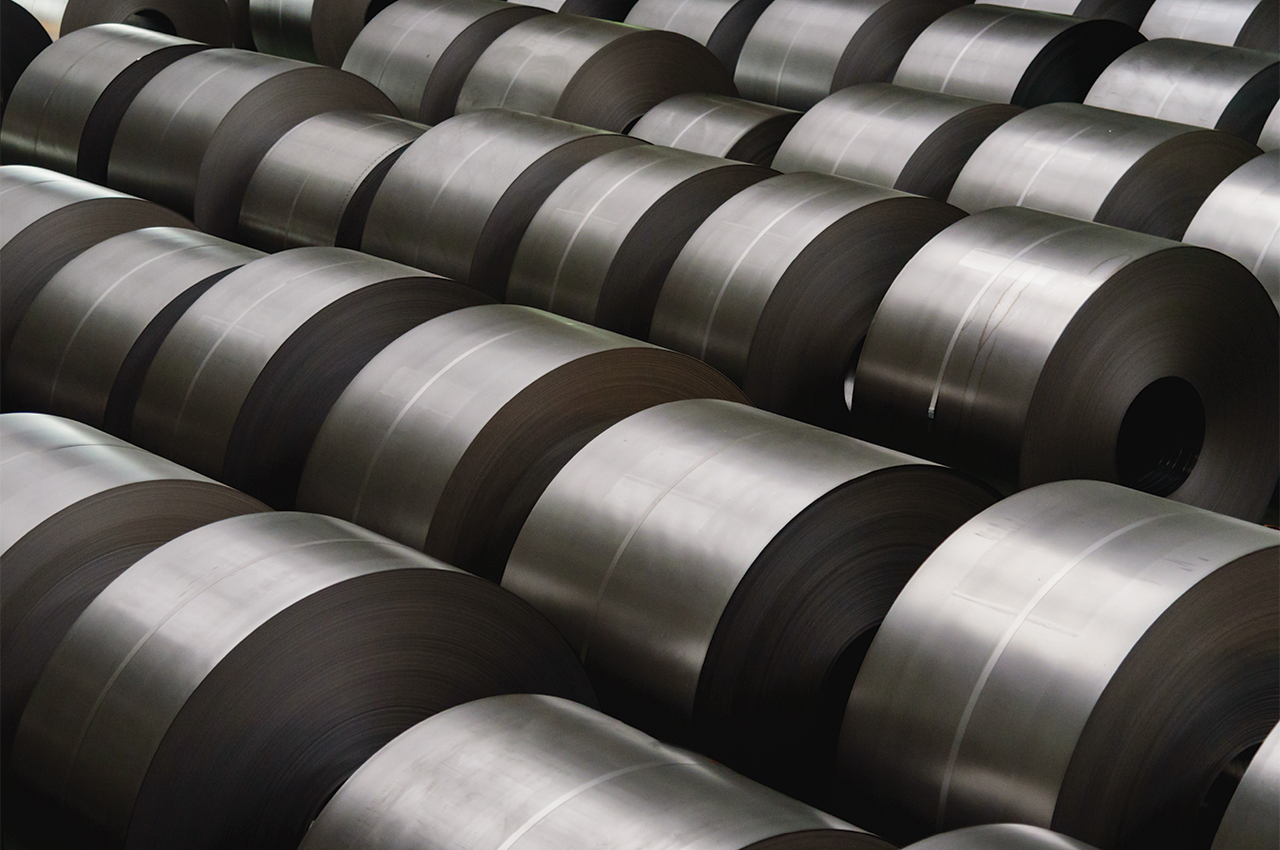
Raw materials are the bedrock of any gear manufacturing process. Using quality raw materials ensures the reliability and efficiency of gears. In this article, we look at the different grades of carbon steel that are used in different applications in gear manufacturing.
Low-carbon steel, also known as mild steel, has a comparatively low ratio of carbon to iron compared to other steel types.
Typically, its carbon content is within the range of 0.05% and 0.32% by weight. This gives low-carbon steel low strength while making it more malleable and ductile compared to high-carbon steel.
One of the major benefits of mild steel is its cost-effectiveness. As it requires less carbon and other alloying elements, it’s normally less expensive than other types of steel.
Moreover, it’s more readily available and simpler to work with than higher-carbon steels, which makes it a popular choice for a wide range of applications.
Despite its low strength compared to other steel types, low-carbon steel is still strong enough for use in structural applications. It’s also used for machinery parts, as it helps to reduce machining costs.

Medium-carbon steel has a carbon content typically ranging between 0.3% and 0.6%.
This category of steel offers a balance between the ductility and formability of low-carbon steel and the strength and hardness of high-carbon steel.
Medium-carbon steels are stronger and harder than low-carbon steels. This is due to their increased carbon content, but it also means they’re less ductile and more difficult to form and weld.
They often require heat treatment, such as quenching and tempering, to achieve desired mechanical properties. This is possible with its manganese content, which ranges between 0.30% to 0.60%.
Medium-carbon steels are commonly used in applications where higher strength and toughness are needed, as shown in the table below.
Common types of medium-carbon steel and their applications include:
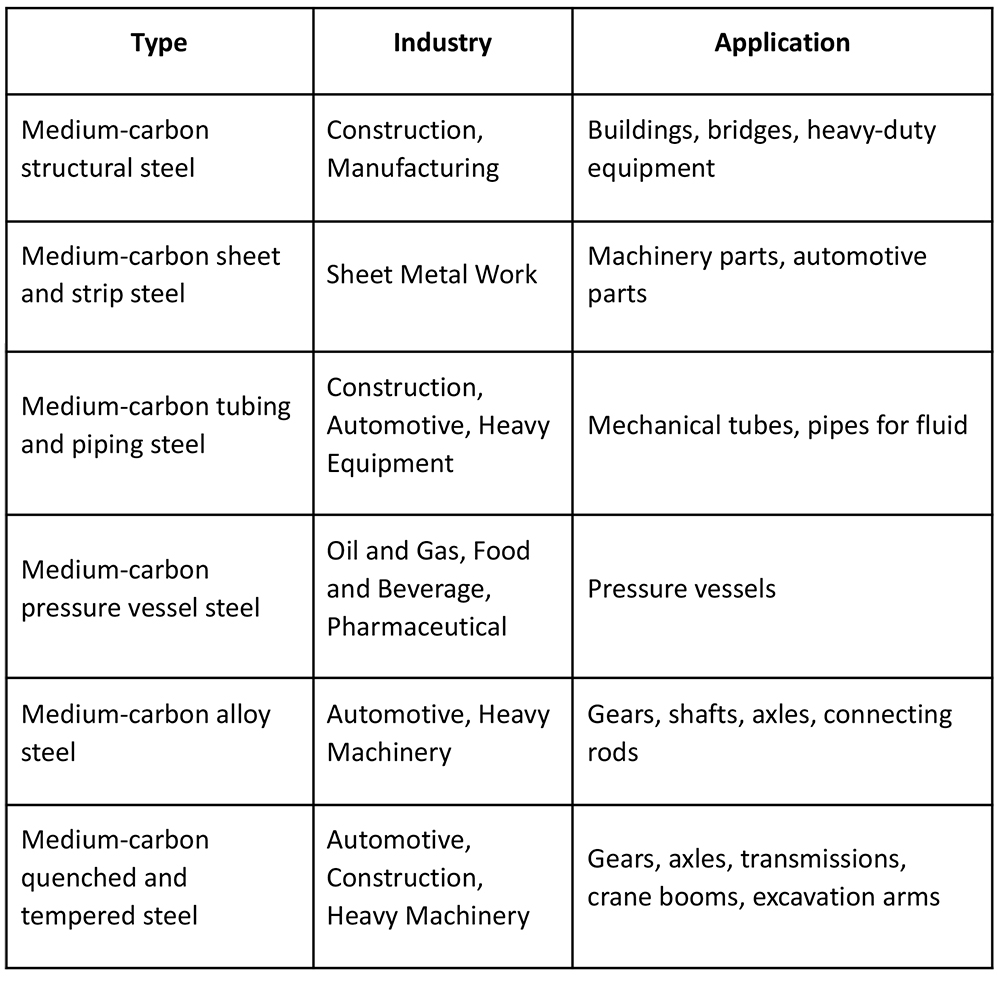
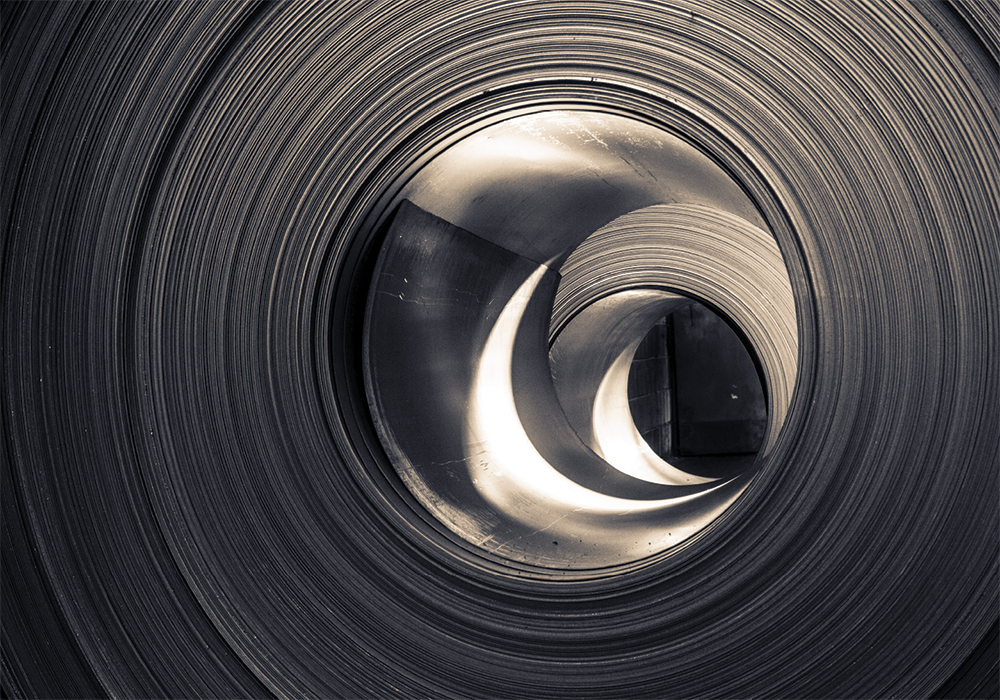
Products made from medium-carbon steel adhere to specific standards. Within those standards are grades. Commonly used grades of medium-carbon steel – and the standard they fall under – include:

Each grade has its own properties that distinguishes it from other medium-carbon steel grades.
The table below gives you a range of values for medium-carbon-steel properties.

High-carbon steel contains a carbon content ranging between 0.60% – 1.5%. It’s the most corrosion resistant of the steels due to its high amount of carbon. This increased carbon significantly enhances the steel’s hardness, tensile strength, and wear resistance. In turn, this makes it suitable for applications that demand high strength and wear resistance.
However, the higher carbon content also makes these steels more brittle and less ductile, which makes it more susceptible to cracking under certain conditions. High-carbon steel is also more challenging to weld than lower-carbon-content steels, due to the risk of cracking and brittleness in the heat-affected zone.
High-carbon-steel uses include anything needing wear resistance and durability, as shown in the table below. High-carbon steel is often used to manufacture springs.
A note about plain high-carbon steel, which is often used to mean high-carbon steel.
They are different. Plain high-carbon steel consists mostly of carbon and iron, without any significant amounts of alloying elements.
Grades of all carbon steels are subsets of specific standards. Some of the most commonly used grades of high-carbon steel include the following:
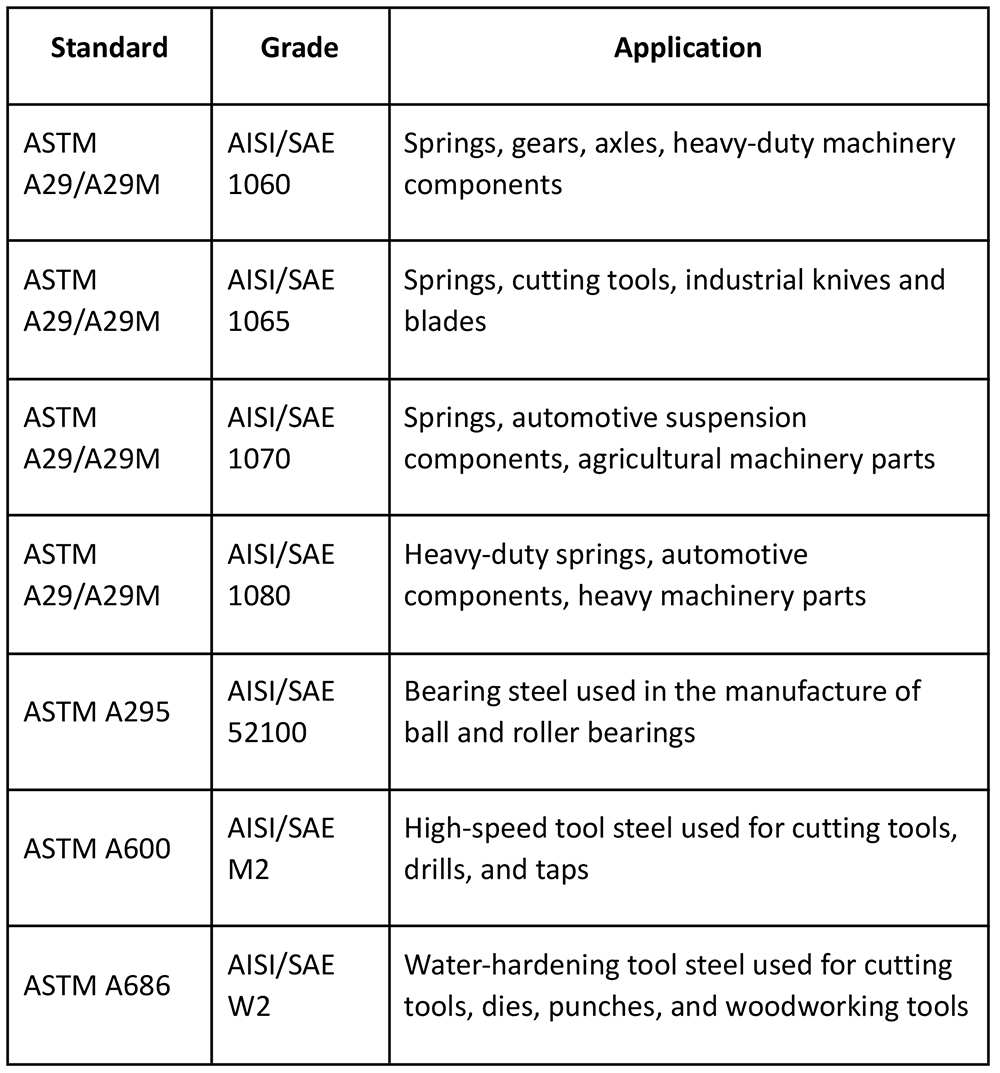
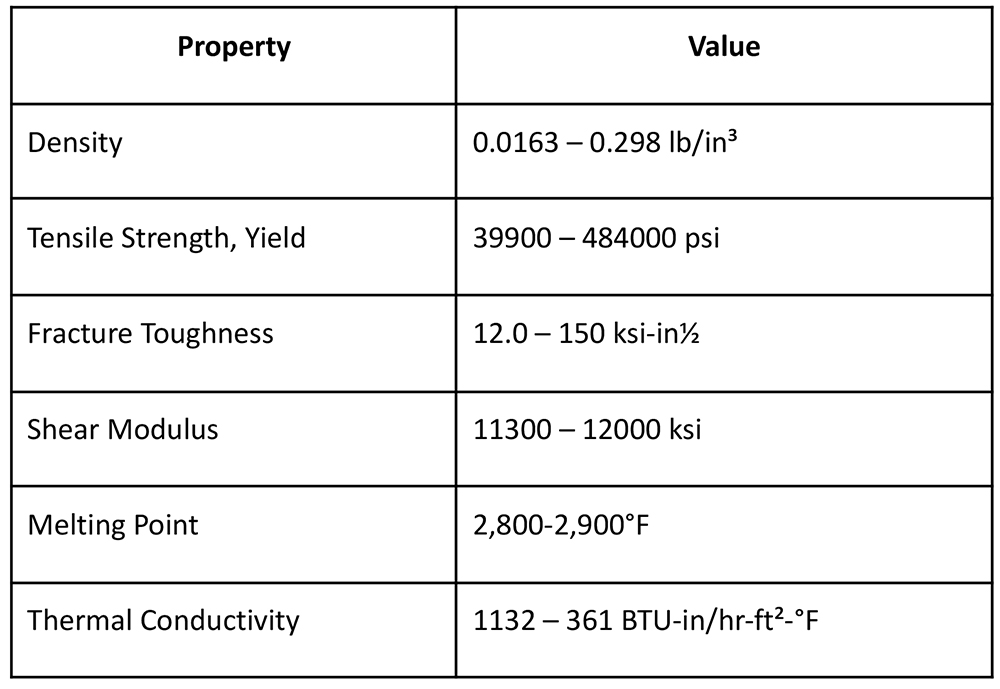
The essential difference lies in the steels’ carbon content, each of which reflects different characteristics.
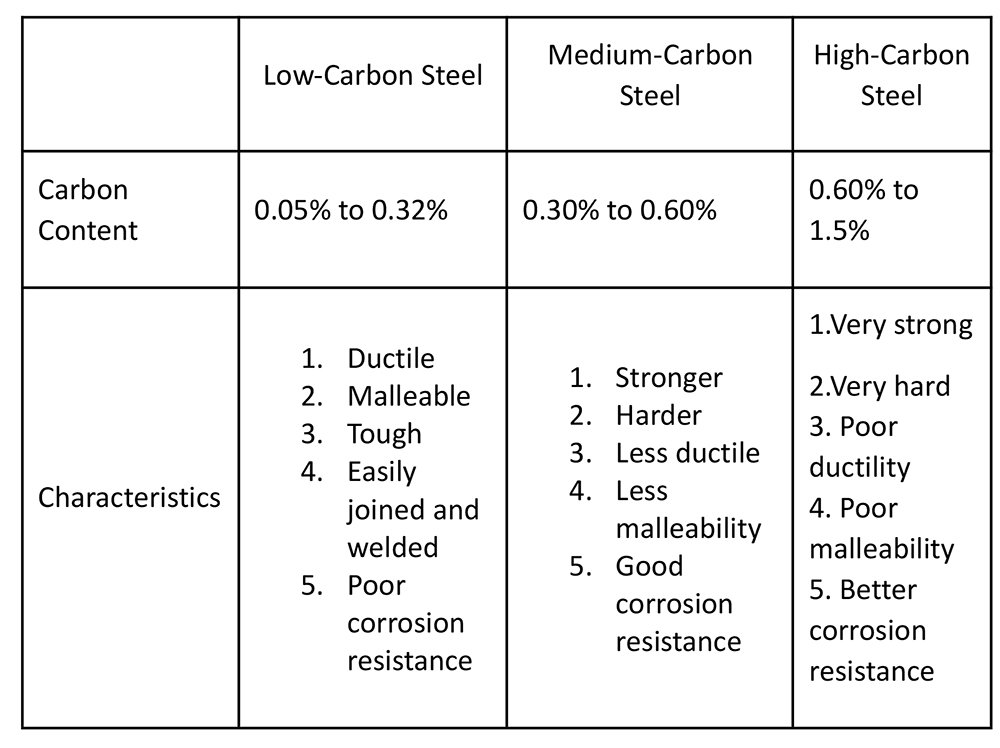
Grey Cast Iron:
This material is used for gears where there is slow speed operation areas.
Depending on the load, grades can be varied from FG200/FG250/FG260
This material is exclusively used for worm wheels
This material is used for open gearing with higher loads
Carbon Steel for Surface Hardening C45, C60E, EN8:
These materials are used for output shafts of gearboxes with normalized condition.
These materials are used for gears with through hardening as well as surface hardening.
In the above materials, we can maintain hardness value, and as below by hardening and tempering. These gears can be supplied with cut and profile grinding finish.
En 24 (upto 450 BHN), En 19 (upto 350BHN) and En 9/C60E (up to 280BHN)
We can achieve higher hardness of 58 -62Hrc through Gas Nitriding, and Sursulf Nitriding with a case depth of 0.5mm and less. We can achieve higher case depth via Induction Hardening.
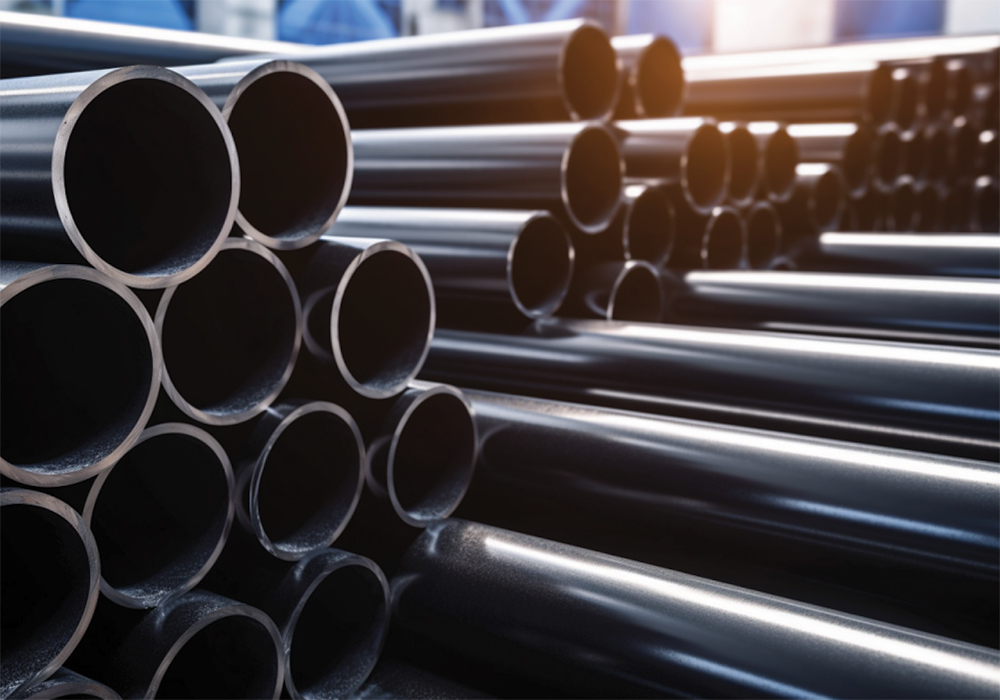
Case hardened steels EN36C, EN353, SAE 8620H, 16MnCr5, 20MnCr5, 18CrNiMo7-6.:
These are all case-hardened steels. They require gas carburising and hardening to get a higher surface hardness with good case depth.
The above materials can maintain a surface hardness value of 58-62 hrc core hardness and 28-32-40 hrc depending on material used.These gears will be supplied case hardened and profile ground.
The differences between the various types of materials used for different applications including gear manufacturing have been elucidated above.
If we select the appropriate material to achieve the correct heat treatment processes, we can get good results.
 The author, C Selvaraj, has four decades of experience in the field of gears and gearbox manufacturing, as well as servicing of gearboxes.
The author, C Selvaraj, has four decades of experience in the field of gears and gearbox manufacturing, as well as servicing of gearboxes.